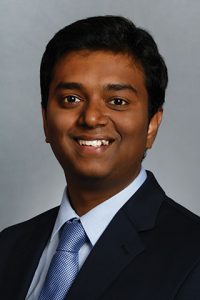July 22, 2021

We’ve all been there. You schedule a doctor’s appointment for 10 a.m. and show up on time only to sit in the waiting room for 45 minutes. This not only frustrates patients, it also costs clinics money. That’s why a Mizzou Engineer has developed a scheduling system that uses machine learning to more efficiently book appointments.
There are two main reasons we don’t always get in to see the doctor at our scheduled time, said Sharan Srinivas, an assistant professor in Industrial and Manufacturing Systems Engineering. First, an estimated 30% of patients who make appointments simply don’t show up.

“The common thing that breaks the system is uncertainty,” Srinivas said. “If a particular slot is not being used because of a no show, that results in loss of revenue for the clinic. To compensate, clinics book multiple patients at the same time. But then, if everyone shows up, the doctor can only see one person at a time, causing a wait. And that wait magnifies as the day goes on.”
The other factor is consultation length. If a patient is scheduled for a quick procedure but spends a lot of time asking questions, it can cause a backup.
Srinivas’ model takes these factors into account by looking at patient-related characteristics, appointment information and provider attributes. Through machine learning, the system can see whether a person has a tendency to miss appointments and how long the person typically needs with the doctor.
“When a patient calls for an appointment, the interface feeds in patient-related characteristics,” he said. “It takes these variables in real time and gives you the probability of that patient missing the appointment, as well as the average consultation duration for that individual.”
Srinivas, who has a joint appointment in the Trulaske College of Business, is now looking at ways to best incorporate the model into clinical settings. Such smart appointment systems would allow clinics to use patient-specific information to develop dynamic scheduling rules, allowing the office to optimize both patient’s waiting time and doctor’s workload.
Srinivas outlined his model in the International Journal of Medical Informatics earlier this year. Haya Salah, a PhD student in industrial engineering, co-authored the paper.